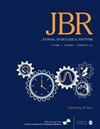环境光通过激活小鼠Brn3b表达的内在光敏视网膜神经节细胞控制呼吸的日常组织结构
IF 2.1
3区 生物学
Q2 BIOLOGY
引用次数: 0
摘要
微小通气量每天有节奏的波动是由位于视上核(SCN)的内源性昼夜节律钟控制的。光是昼夜节律上核(SCN)的有效同步器,它还通过激活表达 Brn3b 的固有光敏视网膜神经节细胞(ipRGCs)来影响生理和行为。目前还不清楚外部光环境在多大程度上影响了独立于 SCN 的日常通气模式。为了确定环境光与昼夜节律对微小通气量日节律组织的相对影响,我们使用全身胸压测量法测量了非训练T28周期(14小时光照:14小时黑暗)饲养小鼠的呼吸。通过这种方法,我们发现小鼠的微小通气量表现出约 28 小时的节律,其峰值出现在天黑时,与光暗周期和动物的运动活动相吻合。为了确定这种28小时的通气节律是否由表达Brn3b的ipRGCs介导,我们测量了在T28周期下饲养的Brn3bDTA小鼠的呼吸。Brn3bDTA小鼠缺乏表达Brn3b的ipRGCs,而这些ipRGCs可投射到许多非SCN脑区。我们发现,尽管有节律的光提示发生在28小时的基础上,但Brn3bDTA小鼠在分钟通气量、运动活动和核心体温方面表现出与SCN组织一致的24小时节律。研究发现,Brn3bDTA小鼠的24小时分钟通气节律主要由潮气量而非呼吸频率驱动。这些数据表明,外部光暗周期可通过表达 Brn3b 的 ipRGCs 直接驱动分钟通气的日常模式。此外,这些数据还有力地表明,当光暗线索与内源性时钟定时相反时,Brn3b表达的ipRGCs的激活主要组织了呼吸和运动活动的日常模式。本文章由计算机程序翻译,如有差异,请以英文原文为准。
Environmental Light Controls the Daily Organization of Breathing by Activating Brn3b-expressing Intrinsically Photosensitive Retinal Ganglion Cells in Mice.
Rhythmic, daily fluctuations in minute ventilation are controlled by the endogenous circadian clock located in the suprachiasmatic nucleus (SCN). While light serves as a potent synchronizer for the SCN, it also influences physiology and behavior by activating Brn3b-expressing, intrinsically photosensitive retinal ganglion cells (ipRGCs). It is currently unclear the extent to which the external light environment shapes daily ventilatory patterns independent of the SCN. To determine the relative influence of environmental light versus circadian timing on the organization of daily rhythms in minute ventilation, we used whole-body plethysmography to measure the breathing of mice housed on a non-entraining T28 cycle (14 h light:14 h dark). Using this protocol, we found that minute ventilation exhibits a ~28-h rhythm with a peak at dark onset that coincides with the light:dark cycle and the animals' locomotor activity. To determine if this 28-h rhythm in minute ventilation was mediated by Brn3b-expressing ipRGCs, we measured the breathing of Brn3bDTA mice housed under the T28 cycle. Brn3bDTA mice lack the Brn3b-expressing ipRGCs that project to many non-SCN brain regions. We found that despite rhythmic light cues occurring on a 28-h basis, Brn3bDTA mice exhibited 24-h rhythms in minute ventilation, locomotor activity, and core body temperature consistent with organization by the SCN. The 24-h minute ventilation rhythm of Brn3bDTA mice was found to be driven predominantly by tidal volume rather than respiratory rate. These data indicate that the external light:dark cycle can directly drive daily patterns in minute ventilation by way of Brn3b-expressing ipRGCs. In addition, these data strongly suggest that the activation of Brn3b-expressing ipRGCs principally organizes daily patterns in breathing and locomotor activity when light:dark cues are presented in opposition to endogenous clock timing.
求助全文
通过发布文献求助,成功后即可免费获取论文全文。
去求助
来源期刊
CiteScore
6.10
自引率
8.60%
发文量
48
审稿时长
>12 weeks
期刊介绍:
Journal of Biological Rhythms is the official journal of the Society for Research on Biological Rhythms and offers peer-reviewed original research in all aspects of biological rhythms, using genetic, biochemical, physiological, behavioral, epidemiological & modeling approaches, as well as clinical trials. Emphasis is on circadian and seasonal rhythms, but timely reviews and research on other periodicities are also considered. The journal is a member of the Committee on Publication Ethics (COPE).

 求助内容:
求助内容: 应助结果提醒方式:
应助结果提醒方式:


